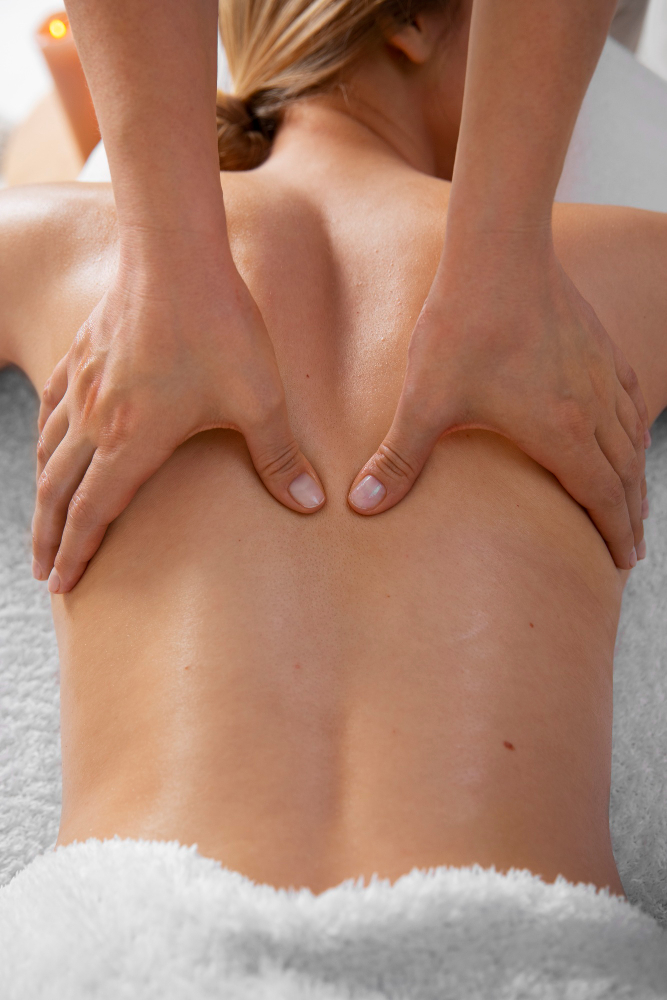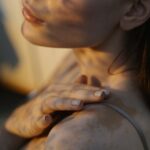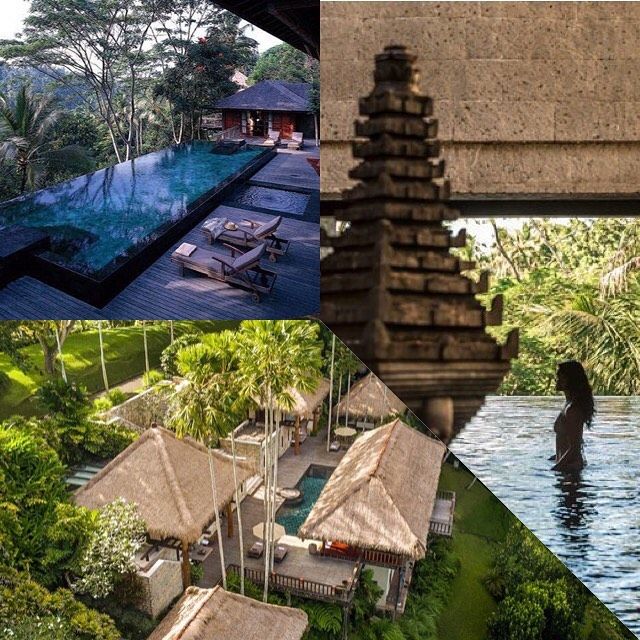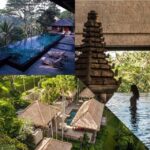
8 Famous Massages Practiced in Luxury Spas Around the World
Video By Cottonbro Studio
Stepping into a luxury spa is like entering a sanctuary where time slows down and everyday stresses melt away. Among the most sought-after experiences in these havens of tranquility are the world-renowned massage therapies that combine ancient wisdom with modern techniques. The allure of famous massages and luxury spas draws travelers from across the globe seeking rejuvenation and cultural immersion through the healing power of touch. From the volcanic stones of Hawaii to the fragrant herbs of Thailand, each massage style tells a story of traditional healing practices refined over centuries.
In this comprehensive guide, we’ll journey through eight exceptional massage traditions that have earned their place in the world’s most prestigious spas. We’ll explore not just the techniques themselves, but also the luxury establishments that have perfected them, the unique cultural contexts that shaped them, and the specific health benefits they offer. Whether you’re planning your next wellness retreat or simply curious about global massage traditions, this exploration of famous massages and luxury spas will transport you to the pinnacle of relaxation experiences.
The Ancient Art of Swedish Massage in Nordic Retreats
The Swedish massage may be the world’s most recognized massage style, but experiencing it in the pristine setting of a Nordic luxury spa transforms this familiar therapy into something truly extraordinary. Developed in the early 19th century by Swedish physician Per Henrik Ling, this technique combines physiological understanding with traditional practices to create a deeply therapeutic experience.
At the heart of authentic Swedish massage are five fundamental strokes: effleurage (long, gliding strokes), petrissage (kneading), friction (deep circular movements), tapotement (rhythmic tapping), and vibration. When practiced in premium Nordic spas like Stockholm’s Grand Hôtel Nordic Spa or Finland’s Arctic TreeHouse Hotel Spa, these techniques are elevated by the serene natural surroundings and meticulous attention to detail that characterizes Scandinavian wellness philosophy.
What distinguishes the Swedish massage in these northern luxury spas is the integration of local elements—pine-infused oils, birch extracts, and even traditional sauna rituals before or after treatment. These spas often feature floor-to-ceiling windows overlooking pristine forests or lakes, creating an immersive nature experience that amplifies the massage’s calming effects. Many practitioners in these establishments have trained at prestigious Nordic institutes where the technique has been refined over generations.
The therapeutic benefits extend beyond mere relaxation. A properly executed Swedish massage improves circulation, increases oxygen flow to muscles, reduces cortisol levels, and releases endorphins. When booking this classic therapy, ask about the spa’s specific approach—many Nordic luxury spas have signature variations that incorporate regional botanical ingredients or customize pressure based on seasonal wellness needs
Balinese Massage: Spiritual Healing in Indonesia's Paradise Spas
Balinese massage represents a perfect symphony of techniques drawn from across Asia, reflecting Indonesia’s position as a cultural crossroads. This holistic treatment combines gentle stretches, acupressure, reflexology, and aromatherapy in a flowing sequence that addresses both physical and spiritual wellness. The experience of receiving this therapy in one of Bali’s luxury spas adds an incomparable dimension of authenticity and indulgence.
COMO Shambhala Estate in Bali has elevated Balinese massage to an art form. These sanctuary-like famous massages and luxury spas destinations are often perched on jungle ridges or facing terraced rice fields, with open-air pavilions where the sounds of flowing water and tropical birds enhance the sensory journey. Many treatments begin with a cleansing foot ritual using volcanic black sand and frangipani-infused water—elements that connect the experience to Bali’s volcanic landscape.
What makes authentic Balinese massage unique is its spiritual dimension. Practitioners, many from families with generations of healers, begin with a silent prayer for healing energy transfer. The massage itself incorporates long, sweeping strokes to soothe the nervous system, with deeper work on tension points, gentle skin rolling, and percussive techniques that stimulate blood and “qi” (energy) flow throughout the body.
The aromatic oils used in premium Balinese luxury spas are often made in-house, blending indigenous ingredients like ginger, clove, and cendana (sandalwood). These establishments might also incorporate traditional “boreh” warming wraps using crushed spices or offer bathing ceremonies in flower-strewn pools as part of extended treatment packages. Beyond physical relaxation, Balinese massage aims to restore harmony between mind, body and spirit—what Balinese culture calls “tri hita karana,” the three sources of wellbeing.
Ayurvedic Abhyanga: Ancient Wisdom in India's Heritage Spa Retreats
Among the world’s famous massages and luxury spas experiences, few are as personalized as Ayurvedic Abhyanga. This treatment isn’t simply a massage but a cornerstone of the world’s oldest holistic wellness system. Dating back over 5,000 years, Abhyanga is distinctive for being completely customized to your dosha (constitutional type)—vata, pitta, or kapha—determined through consultation with an Ayurvedic doctor before your treatment begins.
India’s most authenticspas for this experience include Ananda in the Himalayas and Carnoustie Ayurveda & Wellness Resort in Kerala, where Abhyanga is performed in spaces designed according to Vastu Shastra principles (Indian architectural science) to enhance energy flow. These sanctuaries often feature hand-carved wooden treatment tables, copper vessels for warming oils, and silent therapists who work in synchronized movements when performing the traditional four-handed version.
The massage itself is characterized by rhythmic, long strokes using copious amounts of warm herbal oil specifically blended for your constitution—perhaps sesame-based oil for vata types, coconut for pittas, or mustard seed for kaphas. What distinguishes Abhyanga from other luxury spas offerings is the meticulous attention to marma points—subtle energy centers where consciousness and matter meet.
Premium Ayurvedic luxury spas enhance the experience with pre-treatment rituals like nasya (nasal cleansing with medicated oils) and post-massage shirodhara, where a steady stream of warm oil is poured over the forehead to induce profound mental stillness. The reported benefits are extensive: improved circulation, nervous system regulation, better sleep, joint lubrication, skin nourishment, and toxin elimination. Many guests report a distinctive “lightness of being” after Abhyanga that distinguishes it from more physically-focused Western massage styles.
Traditional Thai Massage: The Living Heritage in Bangkok's Elite Spas
Often described as “lazy person’s yoga,” traditional Thai massage (Nuad Boran) stands apart from other famous massages and luxury spas offerings by combining acupressure, assisted yoga postures, and energy work along sen lines (similar to Chinese meridians). This ancient practice, believed to have been developed by Buddha’s physician over 2,500 years ago, has found its most refined expression in Bangkok’s ultra-luxurious spa establishments.
The Peninsula Bangkok Spa and Mandarin Oriental Spa represent the pinnacle of Thai massage artistry, where the experience begins long before you reach the treatment room. These luxury spas house authentic Thai massage pavilions with silk cushions, teak furnishings, and aromatic diffusers carrying the scent of lemongrass and jasmine. Practitioners, many of whom learned at the revered Wat Pho Traditional Medical School, perform a ritualistic wai (traditional Thai greeting) before commencing this clothed massage technique.
Unlike Western massage styles, Thai massage involves no oils and is performed on a firm mat on the floor. The therapist uses thumbs, palms, elbows, knees, and feet to apply precise pressure while guiding your body through stretches that increase flexibility and energy flow. The rhythm is deliberate and meditative, creating what practitioners call a “dance of compassion” between giver and receiver.
Premium Thai luxury spas enhance the experience with pre-treatment herbal foot baths using indigenous plants like turmeric and kaffir lime, followed by post-massage servings of traditional longan tea to complement the internal detoxification process. The therapeutic benefits are comprehensive: improved posture, greater flexibility, enhanced energy flow, reduced muscle tension, and a profound sense of mental clarity that Thai people call “jjai yen” (cool heart).
Hot Stone Therapy: Volcanic Healing in Hawaiian Luxury Destinations
The practice of using heated stones for healing predates modern massage therapy by thousands of years, with indigenous cultures worldwide incorporating this element into their traditional medicine. However, it is the Hawaiian tradition of using volcanic basalt stones that has become one of the most sought-after famous massages and luxury spas experiences internationally, particularly when experienced in Hawaii’s premium wellness destinations.
Four Seasons Resort Hualalai and Mauna Lani Auberge Resort offer definitive versions of hot stone massage, often in oceanfront treatment rooms where the rhythmic sound of Pacific waves enhances the sensory journey. These luxury spas source their basalt stones from local volcanic formations, connecting the therapy directly to the powerful geological forces that shaped the Hawaiian islands. The stones’ porosity and iron content allow them to retain heat exceptionally well and transfer it deeply into tissue.
What distinguishes authentic Hawaiian hot stone therapy from other luxury spas’ offerings is the incorporation of traditional “lomilomi” techniques and the spiritual dimension represented by the concept of “mana” (life force) believed to reside within the stones. Practitioners heat the stones to precisely 120-150°F and use them both as massage tools and as placement stones on key energy centers along the spine, palms, and between toes.
Premium Hawaiian luxury spas enhance the experience with indigenous elements like ti leaf wraps, Kona coffee exfoliation pre-treatments, or kukui n
Hot Stone Therapy: Volcanic Healing in Hawaiian Luxury Destinations
The practice of using heated stones for healing predates modern massage therapy by thousands of years, with indigenous cultures worldwide incorporating this element into their traditional medicine. However, it is the Hawaiian tradition of using volcanic basalt stones that has become one of the most sought-after famous massages and luxury spas experiences internationally, particularly when experienced in Hawaii’s premium wellness destinations.
Four Seasons Resort Hualalai and Mauna Lani Auberge Resort offer definitive versions of hot stone massage, often in oceanfront treatment rooms where the rhythmic sound of Pacific waves enhances the sensory journey. These luxury spas source their basalt stones from local volcanic formations, connecting the therapy directly to the powerful geological forces that shaped the Hawaiian islands. The stones’ porosity and iron content allow them to retain heat exceptionally well and transfer it deeply into tissue.
What distinguishes authentic Hawaiian hot stone therapy from other luxury spas’ offerings is the incorporation of traditional “lomilomi” techniques and the spiritual dimension represented by the concept of “mana” (life force) believed to reside within the stones. Practitioners heat the stones to precisely 120-150°F and use them both as massage tools and as placement stones on key energy centers along the spine, palms, and between toes.
Premium Hawaiian luxury spas enhance the experience with indigenous elements like ti leaf wraps, Kona coffee exfoliation pre-treatments, or kukui nut oil infusions. The therapeutic benefits extend beyond the obvious muscle relaxation; the deep, penetrating heat expands blood vessels, improving circulation to injured areas, while the weight of strategically placed stones creates a grounding effect that many guests describe as deeply comforting to the nervous system. The contrast between the stones’ heat and cooler manual massage strokes creates thermal dynamics that boost lymphatic flow and metabolic waste removal.
oil infusions. The therapeutic benefits extend beyond the obvious muscle relaxation; the deep, penetrating heat expands blood vessels, improving circulation to injured areas, while the weight of strategically placed stones creates a grounding effect that many guests describe as deeply comforting to the nervous system. The contrast between the stones’ heat and cooler manual massage strokes creates thermal dynamics that boost lymphatic flow and metabolic waste removal
Deep Tissue Sports Therapy: Athletic Recovery in Switzerland's Medical Spas
Switzerland has long been at the forefront of combining luxury hospitality with medical expertise, and its approach to deep tissue and sports massage represents the most sophisticated integration of these elements. Unlike many other famous massages and luxury spas traditions that emphasize relaxation, Swiss sports therapy focuses on performance enhancement, injury prevention, and precise rehabilitation through targeted soft tissue manipulation.
Clinique La Prairie and Grand Resort Bad Ragaz set the global standard for medical spa excellence, housing state-of-the-art facilities where sports medicine physicians work alongside massage therapists with advanced training in orthopedic assessment. These luxury spas often begin treatments with computerized posture analysis, thermographic imaging, or gait assessment to identify specific musculoskeletal imbalances before designing a personalized treatment plan.
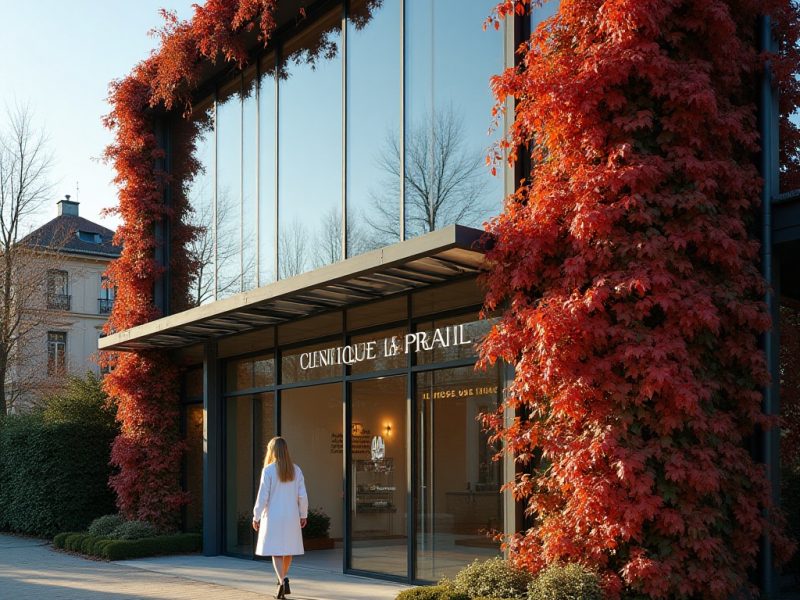
Switzerland has long been at the forefront of combining luxury hospitality with medical expertise, and its approach to deep tissue and sports massage represents the most sophisticated integration of these elements. Unlike many other famous massages and luxury spas traditions that emphasize relaxation, Swiss sports therapy focuses on performance enhancement, injury prevention, and precise rehabilitation through targeted soft tissue manipulation.
Clinique La Prairie and Grand Resort Bad Ragaz set the global standard for medical spa excellence, housing state-of-the-art facilities where sports medicine physicians work alongside massage therapists with advanced training in orthopedic assessment. These luxury spas often begin treatments with computerized posture analysis, thermographic imaging, or gait assessment to identify specific musculoskeletal imbalances before designing a personalized treatment plan.
Shiatsu: Pressure Point Precision in Japan's Zen-Inspired Sanctuaries
Translating literally to “finger pressure,” Shiatsu represents Japan’s most significant contribution to the world of famous massages and luxury spas. Developed in the early 20th century but drawing on principles from traditional Chinese medicine, Shiatsu stands apart for its methodical approach to treating the body’s energetic pathways without the use of oils or lotions. The most authentic versions can be found in Japan’s minimalist luxury spa sanctuaries.
Aman Tokyo’s spa and Hoshinoya Tokyo offer definitive Shiatsu experiences in settings that exemplify Japanese aesthetic principles—wabi (understated elegance), sabi (appreciation of imperfection), and yugen (profound grace). These luxury spas feature treatment rooms with tatami flooring, shoji screens, and views of meticulously maintained Japanese gardens designed to calm the mind before the bodywork begins.
Unlike many other famous massages and luxury spas techniques, authentic Shiatsu follows specific protocols for assessing energy imbalances before treatment. Practitioners observe your posture, complexion, and even the sound of your voice to identify which meridians (energy channels) require attention. The massage itself consists of rhythmic pressure applied with thumbs, fingers, palms, and sometimes elbows along these meridians, with particular attention to tsubo points where energy can become stagnant.
Premium Japanese luxury spas enhance the Shiatsu experience with pre-treatment onsen (hot spring) baths or ganbanyoku (hot stone bed therapy), and may conclude with matcha tea ceremonies performed with meditative precision. Beyond relieving muscle tension, Shiatsu aims to restore ki (energy) flow throughout the body’s meridian system, stimulate the autonomic nervous system, improve organ function, and create what Japanese wellness philosophy calls “wa”—a harmonious balance between opposing forces within the body./
Moroccan Hammam Rituals: Desert Luxury in Marrakech's Opulent Spas
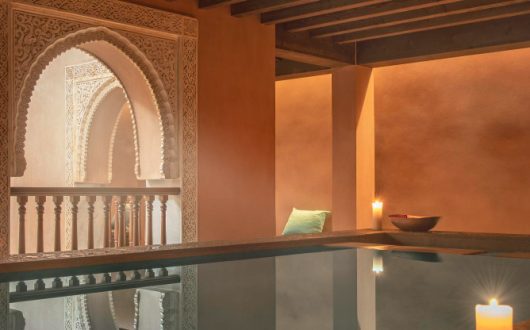
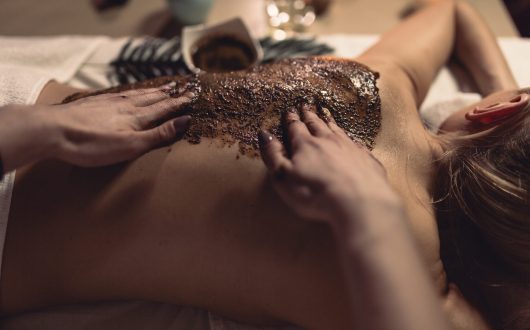
Designed By Freepik (Commercial License)
While not technically a massage in the conventional sense, the Moroccan hammam ritual deserves its place among famous massages and luxury spas traditions for its comprehensive body treatment approach that includes exfoliation, detoxification, and nourishment phases. This ancient cleansing ceremony has been elevated to an art form in Marrakech’s most luxurious spa establishments.
La Mamounia Spa and Royal Mansour Spa exemplify the pinnacle of hammam experiences, housing steam rooms constructed from marble, mosaic, and cedar wood that recall the opulence of medieval Moorish architecture. These luxury spas maintain separate facilities for men and women, as tradition dictates, with treatment sequences that follow centuries-old protocols adapted for modern wellness seekers.
What distinguishes authentic Moroccan hammam from other luxury spas’ offerings is the ritual progression. The experience begins in a steam-filled chamber where the skin is softened before a therapist applies traditional savon noir (black soap made from olive oil and eucalyptus) and performs a vigorous exfoliation using a kessa glove that removes remarkably large amounts of dead skin cells. This is followed by a rhassoul clay application drawn from the Atlas Mountains to draw impurities from the skin.
Premium Moroccan luxury spas enhance the experience with rose water rinses, argan oil massages, and saffron-infused body masks as final treatment phases. Beyond the obvious skin benefits, the hammam ritual’s alternating hot and cool phases stimulate circulation, the steam opens respiratory passages, and the social aspect of traditional hammams reflects the Moroccan cultural value of communal wellbeing. Many guests report that the intense exfoliation creates a sensation of “lightness” and receptivity that makes subsequent massage treatments more effective.
Selecting Your Perfect Luxury Massage Experience
With so many famous massages and luxury spas to choose from, finding your ideal treatment requires consideration of your specific wellness goals, physical condition, and personal preferences. Here are some practical tips for selecting and maximizing your premium massage experience:
Consider your primary objective—whether relaxation, pain relief, increased flexibility, or cultural immersion—and choose accordingly.
Swedish and Balinese massages excel for general relaxation, while Thai massage offers superior flexibility benefits, and Swiss deep tissue therapy targets specific physical complaints.
Research the authenticity of the luxury spas you’re considering. The most memorable experiences come from establishments that employ therapists trained in the massage’s country of origin and incorporate traditional elements rather than offering watered-down versions adapted for tourists.
Timing matters significantly in luxury spa experiences. Schedule demanding treatments like Thai massage or deep tissue work when you have ample recovery time afterward. Consider booking rejuvenating treatments like Abhyanga at the beginning of your trip to combat travel fatigue, and more intensive therapies like hammam rituals mid-stay.
Communicate clearly with your therapist about pressure preferences, problem areas, and medical conditions. Even at the world’s finest luxury spas, the quality of your experience depends largely on how well the treatment is tailored to your specific needs. Don’t hesitate to provide feedback during the session if adjustments are needed.
Plan for a complete wellness journey by considering the luxury spa’s additional facilities. Many premium properties offer hydrotherapy circuits, relaxation lounges, and wellness cuisine that can transform a single massage into a comprehensive half or full-day retreat.
FAQ - Frequently Asked QuestionsAbout Famous Massages and Luxury Spas
1.How far in advance should I book treatments at luxury spas?
For renowned luxury spas in popular destinations, booking 3-4 weeks in advance is recommended, especially during high season. Some of the most exclusive spas like Aman Tokyo or Royal Mansour in Marrakech may require reservations months ahead for weekend appointments or signature treatments.
2.What should I wear (or not wear) during different massage traditions?
This varies significantly by massage type. For Swedish, Balinese, and hot stone treatments at luxury spas, you’ll typically undress completely (with appropriate draping). Thai massage requires loose, comfortable clothing. Ayurvedic treatments are usually performed nude with minimal draping due to the copious oil used. Most luxury spas provide appropriate garments for hammam rituals.
3.Are famous massages at luxury spas worth the premium price compared to standard spa treatments?
The significant price difference between famous massages at luxury spas and standard treatments typically reflects several factors: therapist expertise (often 5+ years of specialized training), treatment duration (frequently 90-120 minutes versus the standard 60), premium indigenous ingredients, exceptional facilities, and personalized assessment before treatment. For many wellness enthusiasts, these elements justify the investment.
4.How do I know if a particular massage style is appropriate for my medical condition?
Always consult your physician before booking speciality treatments if you have significant medical conditions. That said, most reputable luxury spas conduct pre-treatment consultations where you can discuss concerns. Generally, Swedish massage is safest for most conditions, while deep tissue, Thai, and rigorous hammam treatments may require modifications for certain health issues.
5.What questions should I ask to ensure I’m experiencing an authentic version of a traditional massage?
Inquire about your therapist’s training background (ideally in the massage’s country of origin), ask about the specific techniques and sequences that distinguish this massage tradition, and question what indigenous elements are incorporated. Authentic luxury spas will happily share details about how their treatments honor traditional practices while incorporating modern wellness understanding.
What has been your most memorable luxury spa experience? Have you tried any of these famous massage traditions in their countries of origin? Share your stories in the comments below!

